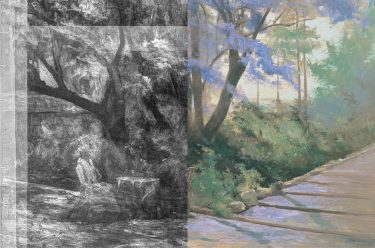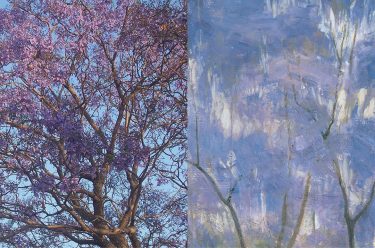It’s that time of the year in Brisbane when purple reigns with a lavender canopy covering the city from October to November — and of course, our own version, captured in oil — a signal that spring is here and summer is on its way.
The jacaranda painted by R. (Richard) Godfrey Rivers (1858-1925) is believed to be the first tree grown in Australia, planted in the Brisbane Botanic Gardens in 1864. Today they are scattered throughout the city with many of the trees grown from the seeds and cuttings of this first jacaranda — including the saplings given to new mothers in the 1930s and ‘40s to accompany them home from hospital.
When visiting the Queensland Art Gallery’s Australian Art Collection, you will notice that Under the jacaranda 1903 is framed under glass (well, actually under non-reflective acrylic glazing). The frame allows the glazing to be spaced away from the paint layers to prevent any paint transfer or abrasion. Incorporating glazing into a frame is a common preventive treatment to protect paint layers from both an inquisitive viewer’s interaction and the ageing effects of climate. As the tree was blown over by a cyclone in 1979 we are keen to keep this version safe from harm. Read on as we continue our series that delves behind-the-surface of our Collection favourite.
CONSERVATION RELATED: What’s under the Jacaranda: DELVE INTO THE COLOUR PURPLE
CONSERVATION RELATED: What’s under the Jacaranda: HIDDEN IN THE X-RAYS
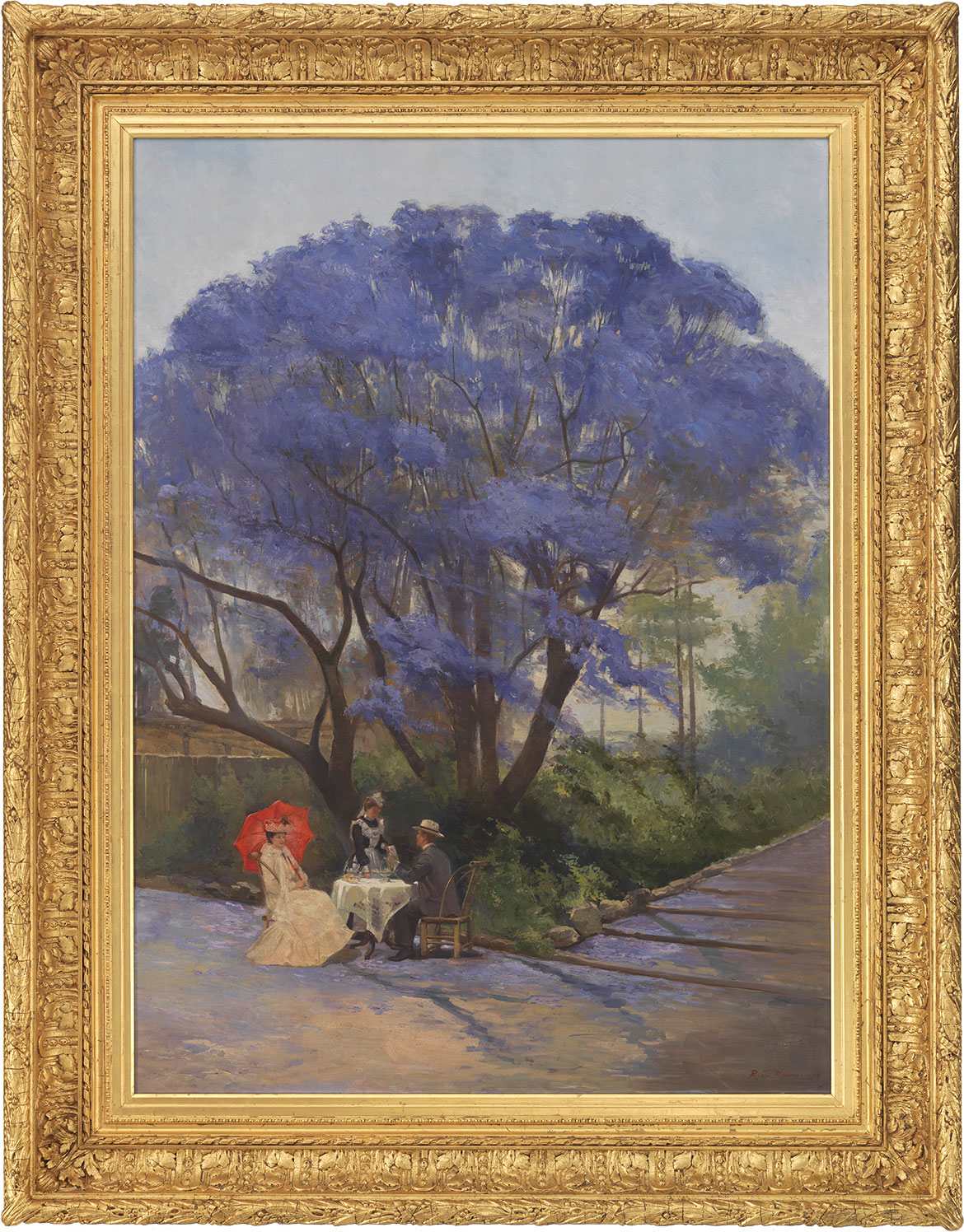
Under the jacaranda was surface cleaned in 2009 to remove layers of dirt. Rivers did not varnish this painting, so the dirt is absorbed directly with the paint over time. To reduce the number of times this painting will require cleaning in the future, after the careful cleaning, a protective layer of glazing was incorporated into its frame.
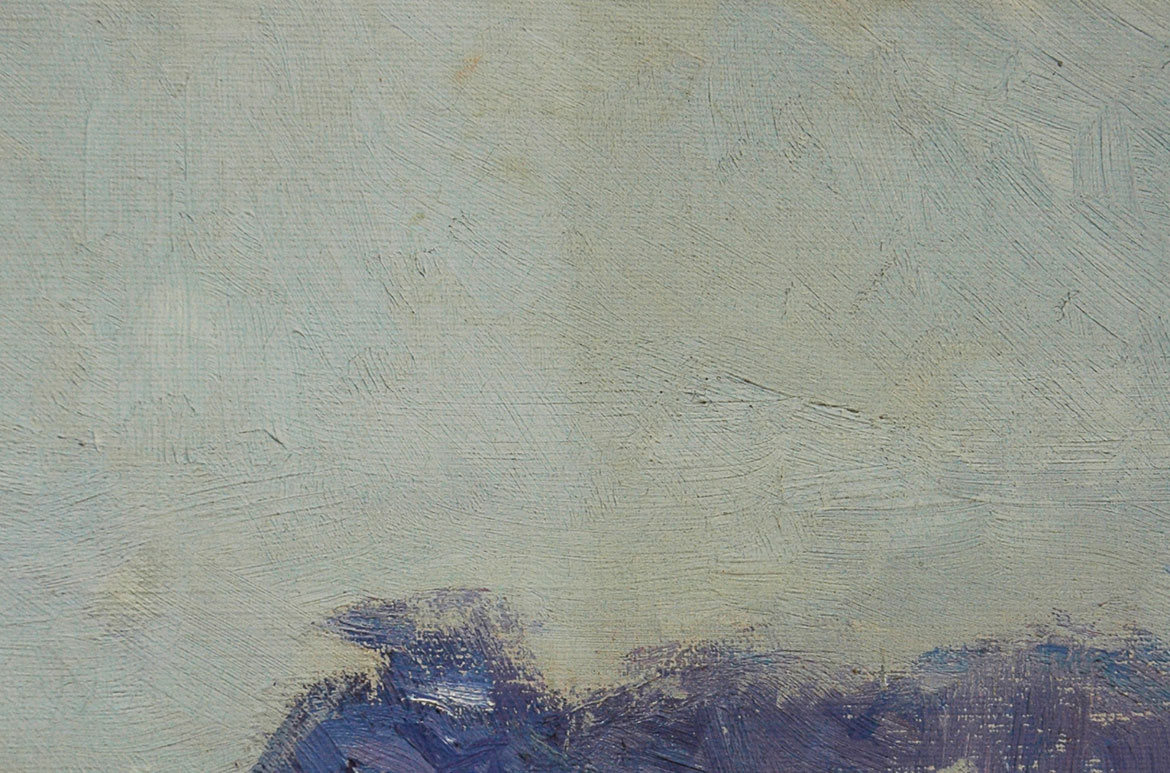


CONSERVATION RELATED: Read more about Metal soap formation in THERE’S A SOAP IN MY PAINTING
RELATED: Read more about UNDER THE JACARANDA
Most importantly, research undertaken found that the oil paint favored by Rivers is susceptible to metal soap formation and in his paintings it manifests as fragile and sensitive paint.
Looking at the painting, you would not imagine the chemical activities going on at a molecular level within the paint layers, however if we look at a cross section, you can see numerous dark round hollows, most obviously throughout the bluer paint sandwiched between the alizarin and madder lake containing layers. These are even more obvious as dark ‘holes’ in the Backscatter electron image.

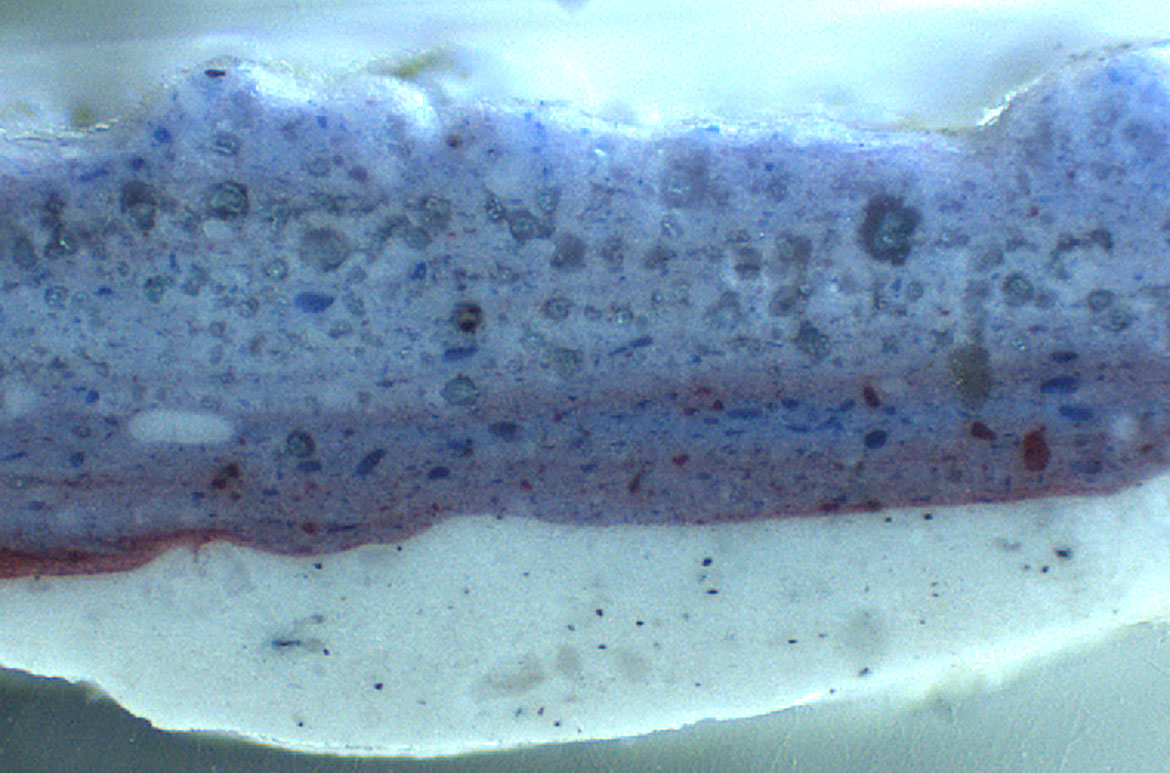
Many of these hollows contain an irregularly shaped core. Unlike the presence of original cobalt blue pigment particles and crimson paint, these hollows reflect changes in paint chemistry that have occurred over time. In this case zinc white pigment, which was present in Rivers’ lead white paint, has reacted away to form ‘zinc soaps’. Unfortunately for Rivers and for us, the presence of these zinc soaps in his painting is not good news. Rivers’ paint is left brittle and fragile by such widespread soap formation.
SIGN UP NOW: Be the first to know. Subscribe to QAGOMA Blog for the latest announcements, acquisitions, and behind-the-scenes features.
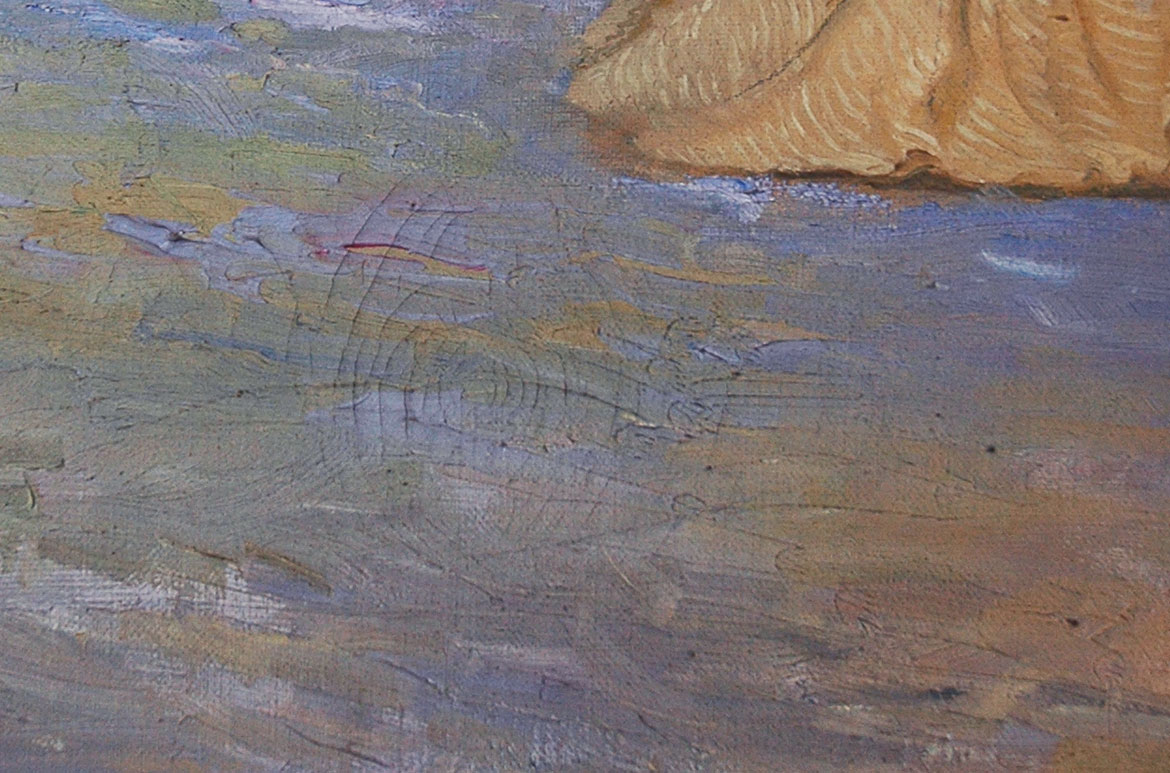
Glazing also allows visitors to get nice and close to the painting without any risk to the paint layers. You can see in the detail where the painting has been poked from the front — likely by an inquisitive finger. A concentric circle of cracking has developed radiating out from this contact. Often such cracking will not be noticeable until years after an event. The effects of fluctuations in temperature and humidity allow the stress to the paint layers to become visible over time — especially in paint layers we already know to be fragile.
There are many reasons why this much loved painting requires our ongoing care and protection, just some of these have been detailed in this art conservation series.
Anne Carter is Conservator, Paintings, QAGOMA
Gillian Osmond is Conservator, Paintings, QAGOMA
Paint samples were originally prepared in 2001 by former Senior Conservator John Hook, QAGOMA
Know Brisbane through the Collection / Read more about Australian Art / Subscribe to QAGOMA YouTube to go behind-the-scenes
Featured image detail: R. Godfrey Rivers Under the jacaranda 1903
#RGodfreyRivers #QAGOMA

